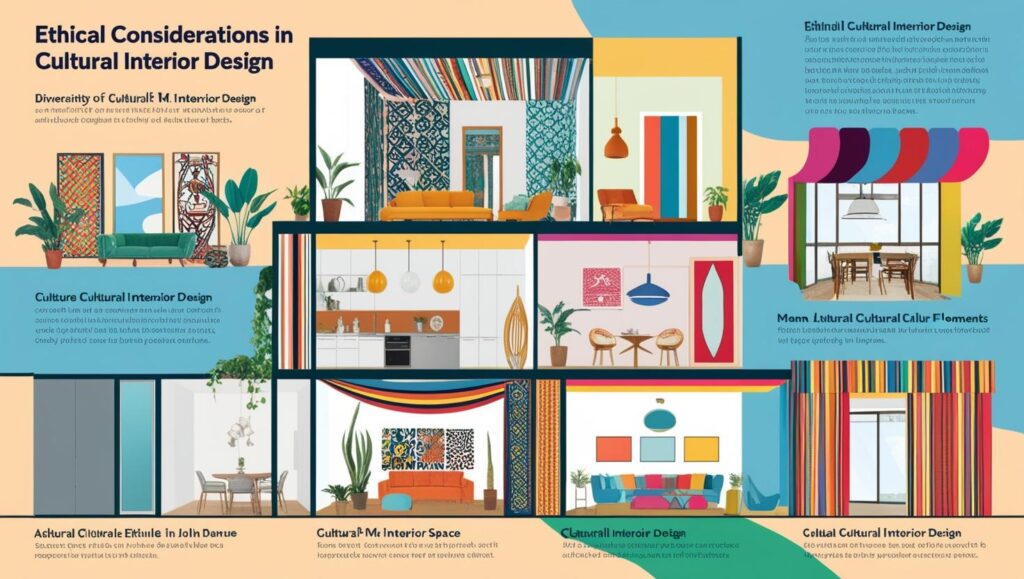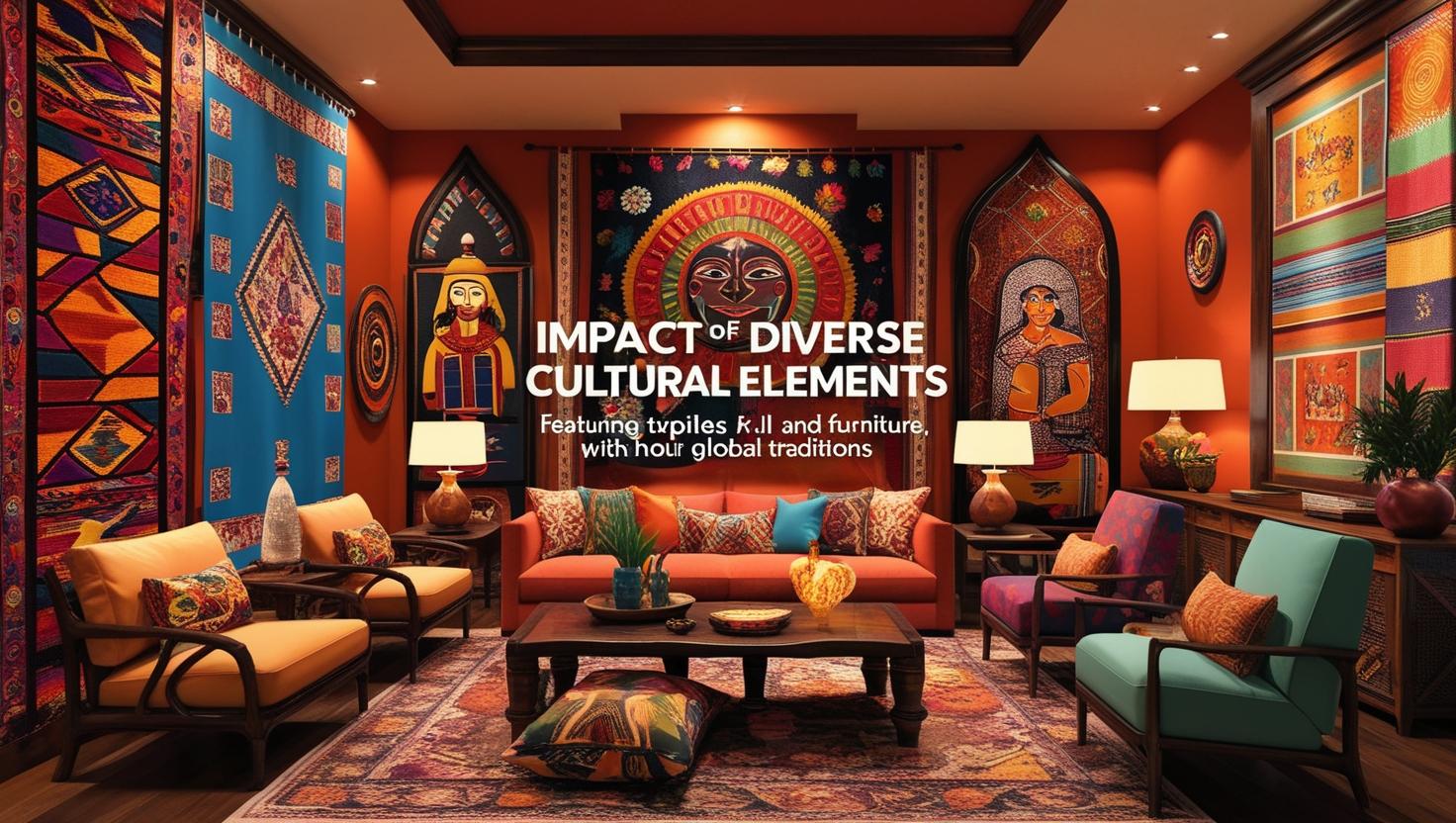Unveiling the Soul of a Space: How Culture Shapes Interior Design
Have you walked ever into a room and felt an immediate sense of place a feeling that transcends mere aesthetics? That’s the magic of cultural interior design – the art of weaving narratives through textures colors and objects breathing life into spaces with the soul of a culture.This isn’t about superficial imitation; it’s about understanding the deeper meanings behind design choices and using them to create truly resonant environments .Whether you’re an aspiring interior designer a seasoned professional or simply someone who appreciates beautiful spaces, understanding the impact of cultural elements is key to unlocking the full potential of interior design. Let’s embark on a journey to explore this captivating world !
What Whispers Through the Walls ?Decoding Cultural Narratives in Design
The Language Objects of: Beyond Decoration
walking Imagine into a Japanese tea room: the low tables , tatami mats shoji screens – each element whispers a story of serenity and mindful living. This isn’t just about visual appeal; objects these embody centuries of tradition, reflecting values of simplicity respect for nature and harmonious coexistence.Similarly the vibrant colors and intricate patterns of Moroccan rugs aren’t mere adornments; they tell tales of craftsmanship,nomadic heritage and rich symbolism . As interior designers, understanding the history and significance of these objects is crucial to using them respectfully and effectively.must We move beyond simply decorating and strive to curate authentic experiences .
Beyond the Obvious: Subtler Cultural Cues
Culture’s influence often extends beyond the readily apparent. Consider the spatial arrangement of furniture.In many Western cultures open floor plans are favored , promoting interaction and flow . However, in some East Asian cultures a more compartmentalized approach may be preferred emphasizing privacy and individual space . Even the color palette carries cultural weight. The passionate reds of versus Spain the calming blues of Scandinavian design speak volumes about differing cultural aesthetics and emotional associations .Interior designers must be sensitive to these nuanced aspects to create spaces that feel genuinely welcoming and appropriate for their intended occupants.
Can We Truly Capture a Culture Through Design? Navigating Authenticity and Appropriation
The Tightrope Walk: Respectful Representation vs. Superficial Imitation
This is perhaps the most critical aspect of cultural interior design.It’s easy to fall into the trap of superficial imitation – cherry-picking elements without understanding their context or significance. This can lead to cultural appropriation a form of misrepresentation that disrespects the traditions heritage and of a culture. Instead responsible interior designers prioritize collaboration and research . Engaging with artisans studying historical contexts and learning from cultural experts ensures that design choices are informed and respectful.I remember a project where I attempted to incorporate elements of Native American design without sufficient research. The result felt shallow and ultimately offensive. That experience taught me valuable a lesson about the importance of authentic representation.
Beyond the Stereotype: Embracing the Nuances of Cultural Identity
Culture isn’t monolithic. Even within a single culture there exists a diversity of styles , preferences and interpretations.For example the “traditional” Japanese style various encompasses regional variations , each with its unique characteristics.Attempting to capture a culture through a single reductive stereotype is not only inaccurate but also dismissive of the rich tapestry of human experience. As interior designers we need to embrace this complexity recognizing the individuality and dynamism within cultural expressions.
How Can I As a Student/Designer Develop Cultural Sensitivity in My Work? A Practical Guide
The Power of Immersive Experiences: Travel Study , and Engagement
There’s no substitute for firsthand experience.Traveling to different regions, immersing yourself in local communities and engaging with artisans are invaluable ways to gain a deeper understanding of cultural aesthetics.This goes beyond simply taking photographs; it involves observing how people live with interact their spaces and express their cultural identity through design. As students actively seek opportunities for international study cultural exchange programs, and collaborative projects with artisans from diverse backgrounds.
Researching Respectfully: Reliable Sources and Avoiding Cultural Misrepresentation
the In digital age accessing information is easier than ever.However, it’s crucial to be discerning about your sources. Prioritize scholarly articles, reputable publications and firsthand accounts from experts cultural over generalized or superficial online resources. Remember respecting intellectual property rights is essential. If you are inspired by a specific design element ensure you give proper attribution and avoid simply copying it without permission .
is Collaboration Key: Working with Cultural Consultants and Artisans
One of the most effective ways to ensure authenticity and respect is to collaborate with cultural consultants and artisans. These individuals possess a deep understanding their of heritage and can offer insights invaluable into design principles material selection and symbolic meanings . Their expertise not only enhances the quality of your work but also ensures that your designs are sensitive and respectful.

What are the Ethical in Considerations Cultural Interior Design?
Appropriation Avoiding: The Line Between Inspiration and Exploitation
The line between inspiration and appropriation can be blurry.Using elements from another culture without understanding their significance or seeking proper permissions is unethical and disrespectful. It’s crucial to view cultural elements as valuable assets, not mere commodities to be borrowed or exploited. For example using Native American motifs without understanding their deeper significance and obtaining permission is a clear case of cultural appropriation which can be incredibly harmful and perpetuate harmful stereotypes.
Promoting Inclusivity and Representation: for Design Diversity
Cultural interior design should not only showcase different cultural aesthetics but also promote inclusivity and representation. This means designing spaces that cater to diverse needs and preferences rather than imposing a single dominant style. For interior designers, this means considering factors such as cultural accessibility sensitivities and the diverse ways that people might interact with a space.
Giving Back: Supporting Local Artisans and Communities
Many cultural elements are tied to local artisans and communities who are often struggling to maintain their traditional crafts .supporting By these artisans and sourcing materials responsibly designers can contribute to the preservation of cultural heritage and ensure economic sustainability . This could involve commissioning custom-made pieces collaborating on design projects , or simply promoting the work of local artisans through your projects.
The Future of Cultural Interior Design: Embracing Global Perspectives
Beyond Borders: A World of Inspiration
The world is becoming increasingly interconnected, and so too is the world of interior design.This interconnectedness offers an incredible opportunity to celebrate cultural diversity and draw inspiration from a vast of array sources. The future of cultural interior design will likely an see increase in collaborative projects,cross-cultural exchanges,and the integration of various design traditions to create truly unique and meaningful spaces.
Sustainability and Cultural Preservation: A Symbiotic Relationship
As awareness of environmental sustainability grows so too does the focus on practices sustainable within cultural interior design. This encompasses not only the use of eco-friendly materials but also the preservation of traditional craft techniques and the support of local artisans. By prioritizing sustainable practices,we can ensure that cultural heritage is preserved for future generations .
The journey of cultural interior design is a continuous learning process . It requires sensitivity respect, and a genuine desire to understand the stories embedded within objects spaces the and people who inhabit them. As interior designers and students alike embracing this journey is not just about creating beautiful spaces; it’about s creating meaningful connections , preserving cultural heritage and building a more inclusive and harmonious world.


